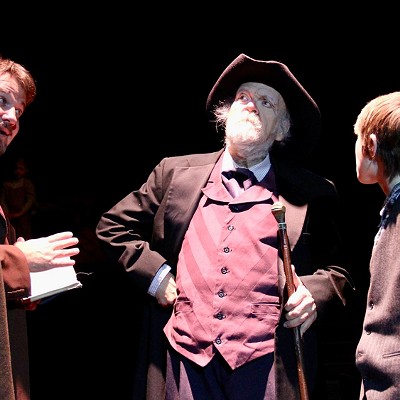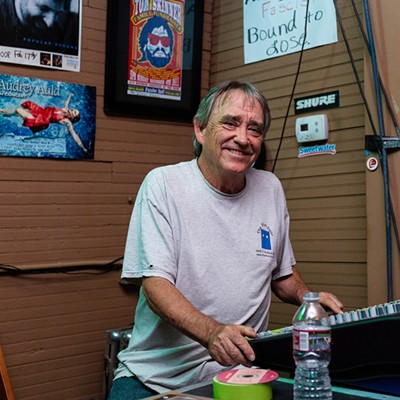Faced with a set of recommendations from transportation planning experts, the Oklahoma City Council must soon decide if it wants to shrink its bus system coverage area, leaving some transit-dependent residents without a ride.
On the other hand, such a move would allow Metro Transit officials to increase bus stop frequency and potentially attract more riders, according to Tim Payne of Nelson- Nygaard Consulting Associates, a San Francisco-based transportation planning firm.
OKC’s bus system has been plagued with a plethora of problems in recent years, not the least of which is a lack of riders. Since 2007, ridership has not varied more than 6 percent. In fact, last year’s 3-percent ridership spike is considered statistically insignificant.
“Compared to other systems in the country, that is something I would consider neutral or flat growth,” Payne said.
In 2012, Metro Transit had a ridership of 2,801,364, up from the previous year’s figure of 2,713,045. Still, transit advocates like Ward 2 Councilman Ed Shadid believe a dramatic increase in ridership would occur with greater funding and frequency of service.
Shadid may have part of that wish granted since the bus service budget is projected to increase $1 million next fiscal year. Still, city officials aren’t sure how to spend the additional money. Currently, the transit system does not operate on Sundays and ends its weekday bus service at 6 p.m. Cost estimates for Sunday service range from $750,000 to $1.5 million.
“How many jobs have you eliminated for the populace by not running mass transit in the evenings or on Sundays? How many retail jobs have you precluded them from obtaining?” Shadid said.
Even with additional funding, the Oklahoma City Council will have to make some difficult decisions based on the recommendations from consultants Payne and Thomas Wittman.
The pair identified several weaknesses within the metro bus system, including poor on-time performance, service duplication, infrequent stops, lack of direct routes and a too-large service area.
Two-thirds of all bus boardings occur in a core area bound by May Avenue on the west, Martin Luther King Avenue on the east, and from N.W. 36th to S.W. 29th
streets. Yet, the bus system has a service area of 244 square miles that
is bound by Memorial Road on the north to S.W. 104th Street and from
Hiwassee Road on the east to Council Road on the west.
As
a result, the consultants suggested the city modify or eliminate four
routes (1, 4, 19 and 20) and develop more direct, faster service with
less deviations through neighborhoods.
That
would end direct service to the Paseo District, North Classen
merchants, St. Anthony Hospital, the state Department of Health,
Douglass Mid-High School, Oklahoma City-County Health Department, Mary
Mahoney Memorial Health Center, Willow View Hospital, Plaza Mayor at the
Crossroads (formerly Crossroads Mall) and the Capitol Hill business
district.
Poor affected
Ward 7
Councilman John Pettis Jr. said he understands the need to transform
the bus system but added that many people in far northeast OKC would be
hurt if routes were eliminated or changed.
“Some
type of public transportation has to be out there because for some of
those people, that’s the only way they can get around,” he said.
Rick
Cain, administrator for the Central Oklahoma Transportation &
Parking Authority (COTPA), acknowledged 90 percent of bus riders are
transit-dependent.
“There
would be a dramatic impact to people’s lives if you reduce the service
area,” he said. “How do these people function? Do they move? That’s a
major life decision.”

After
the Nelson-Nygaard study was presented April 16, Ward 6 Councilwoman
Meg Salyer questioned if the council has the political courage to
eliminate routes and reduce the coverage area.
The bus system’s current condition, Shadid told Oklahoma Gazette, is intended only for the poor.
“The affluent will not support the bus system,” he said.
In the meantime, critical decisions must be made to ensure a more efficient bus system.
“Decreasing
the coverage area will hurt people, but you have to show them the
data,” Shadid said. “It’s not sustainable to go to area X when three
people are getting on and off.”
The
coverage area debate stems, in part, from residential and commercial
developments that are built on the city’s outskirts, such as Mercy
Hospital Oklahoma City, Quail Springs Mall and the new
Social Security Administration office, which is set to relocate to N.E.
122nd and Kelley Avenue. That site is not part of the transit system
map.
“Those [service areas] come at a price, and the price is we’re not very frequent there,” Cain said.
Shadid doesn’t believe Metro Transit can serve the entire city adequately.
“No
municipality across America is trying to provide a transit system for
625 square miles. This transit system is trying to serve everyone but
now serves no one,” he said.
More frequent stops
The
Nelson-Nygaard study suggests more frequent stops with 30-minute
intervals on some routes and 60-minute intervals on others. Adopting the
recommendations would increase ridership 5 to 10 percent, the
consultants said.
Increasing frequency also would improve ridership among residents who have alternate transportation, Shadid said.
“When
you start to make changes, you will attract people who have a choice
because they want to read the paper on the bus or they want only one car
in the family instead of two or three. You won’t get a diverse
ridership with 60-minute frequencies,” he said.

Payne
and Wittman also recommended that more bus routes converge at the same
time at the Downtown Transit Center at N.W. Fifth and Hudson.
A
related recommendation involves the construction of secondary transfer
hubs near OU Medical Center, N.W. 23rd and Pennsylvania Avenue and the
Walmart Supercenter at Reno Avenue and MacArthur Boulevard.
“Waiting times will diminish and reduce transit travel-time,” said the consultants.
OKC buses are on time 74 percent of the time, according to the study. Cain said that rate is unacceptable.
“A more reasonable figure would be in the 90-percent range,” Cain said.

Two
other sets of recommendations would strengthen frequency to 30 minutes
minimum on all routes while also implementing 15-minute, high-frequency
routes on N.W. 23rd Street and Classen Boulevard.
In
addition, the consultants suggested the city consider eliminating its
current hub-spoke system that forces all bus routes to the Downtown
Transit Center.
At
that point, riders must find a connecting bus to their final
destination. In its place, transit officials could implement a grid
system that restricts bus service to arterial streets, which, in turn,
shorten routes and cut waiting time at the transfer center by 75
percent.
The
consultants also recommended city officials eventually consider a
“high-quality airport service” and a Metro Link type of service in
lowerdensity suburban areas.
All the recommendations are linked to funding, Cain said.
Shelters
Treating
“riders with dignity” is another concern Shadid and Cain have in
common. Both support the construction of bus shelters. Currently, bus
benches are provided at most stops but offer no protection from
inclement weather. Shadid and Cain said route maps and times could be
posted under the shelters to keep riders informed.
Again, Cain said, shelters require additional funding.
Currently,
bus benches are provided by Tyler Outdoor Advertising as a means to
generate income for the company. Metro Transit does not receive any
money from the bench advertising.
Wittman told the council on April 16 that bus benches are not common with other transit agencies.
“The
advertiser typically builds the shelter with lights and allows the city
to place information there,” he said. “It’s much more uncommon to place
a bench there and the transit agency not receive anything.”
Higher priority
With
the bus study complete and the MAPS 3 streetcar issue in the public
eye, Metro Transit officials believe public transportation has garnered
the collective attention of OKC citizens for the first time.
“It’s
changed dramatically, and it helped when it became a focus for the
council,” Cain said. “When we had the 2007 bond issue, that was the
first time in history that public transit had been included in the
offering, and we were rewarded with new buses and enhancements to the
transit facilities.”
Six
years earlier, Cain said, a city survey was conducted and “people
didn’t even know what Metro Transit was. Now, people are recognizing
we’re here.”
With the
new-found visibility, he expects public transit will have to evolve from a
city-financed project to a regional authority with more dedicated
funding sources. Currently, the bulk of the Metro Transit budget comes
from OKC’s general fund, while one-third is provided by the federal
government.

Shadid
said he believes OKC’s transit service should be funded similar to the
Oklahoma City Zoo, which receives one-eighths of a penny sales tax for
its operation. He said Oklahoma is the only state in the nation that
depends on sales taxes to fund its mass transit.
OKC
residents will be able to provide input on the Nelson-Nygaard
recommendations at two public meetings slated for noon and 5 p.m. May 21
at the Ronald J. Norick Downtown Library, 300 Park Ave.











